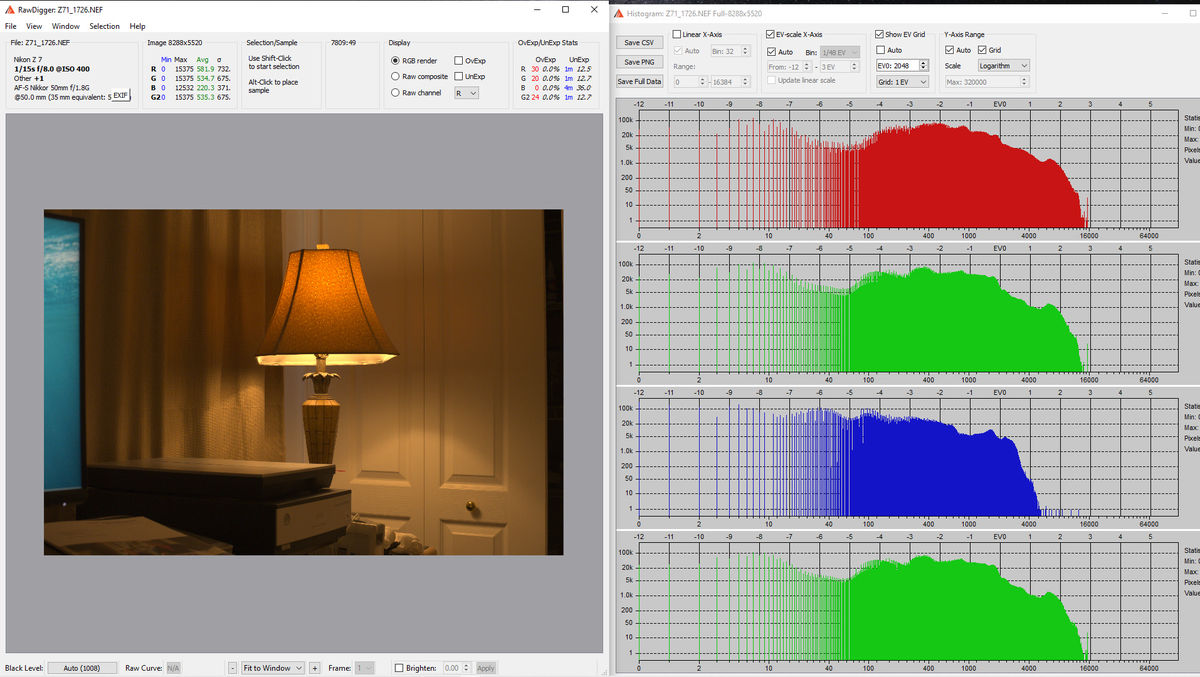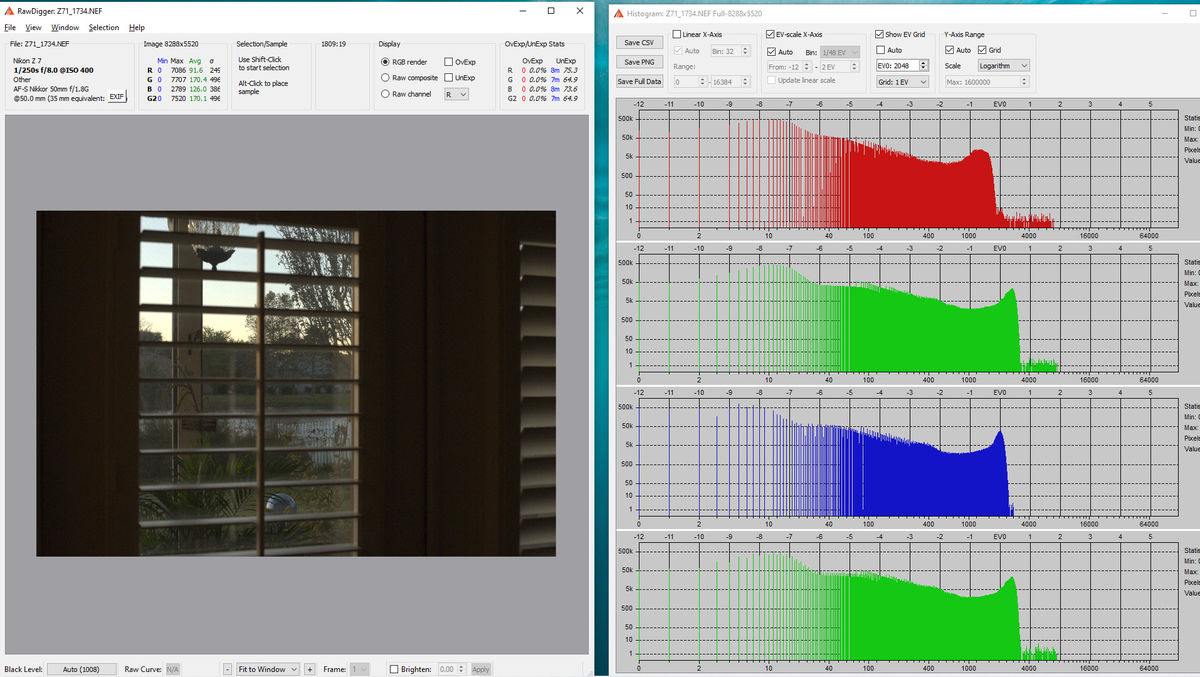Highlight Weighted Metering - ETTR Without Technical Complications
Nov 19, 2021 12:45:31 #
There have been many discussions about exposing to the right (ETTR) and why you might want to do it.
The need for ETTR and the potential benefits are often exaggerated or misrepresented.
The question of how to accomplish it has also involved protracted explanations and recommendations about how you need to test your camera. That might put you off.
There are some simple alternative approaches that anyone can follow including:
1. Highlight warnings - These are almost universally available. If you see them on your camera's LCD after taking the image you might be blowing the highlights in the raw file. To be sure you might want to use RawDigger to confirm this.
2. Zebra warnings - These are highlight warnings that you can see before you click the shutter. Raw digger can also tell you how close to the raw limit they are starting.
But if you have one of the Nikons that offer Highlight Weighted Metering you can produce hassle-free ETTR raw files with very little effort. The following post will contain some simple examples.
The need for ETTR and the potential benefits are often exaggerated or misrepresented.
The question of how to accomplish it has also involved protracted explanations and recommendations about how you need to test your camera. That might put you off.
There are some simple alternative approaches that anyone can follow including:
1. Highlight warnings - These are almost universally available. If you see them on your camera's LCD after taking the image you might be blowing the highlights in the raw file. To be sure you might want to use RawDigger to confirm this.
2. Zebra warnings - These are highlight warnings that you can see before you click the shutter. Raw digger can also tell you how close to the raw limit they are starting.
But if you have one of the Nikons that offer Highlight Weighted Metering you can produce hassle-free ETTR raw files with very little effort. The following post will contain some simple examples.
Nov 19, 2021 12:53:55 #
Here are four images from a Nikon Z7 using Highlight Weighted Metering and EC+0.7 in scenes with different dynamic ranges (DR).
A very low contrast scene. ETTR was not needed so the camera just exposed normally.
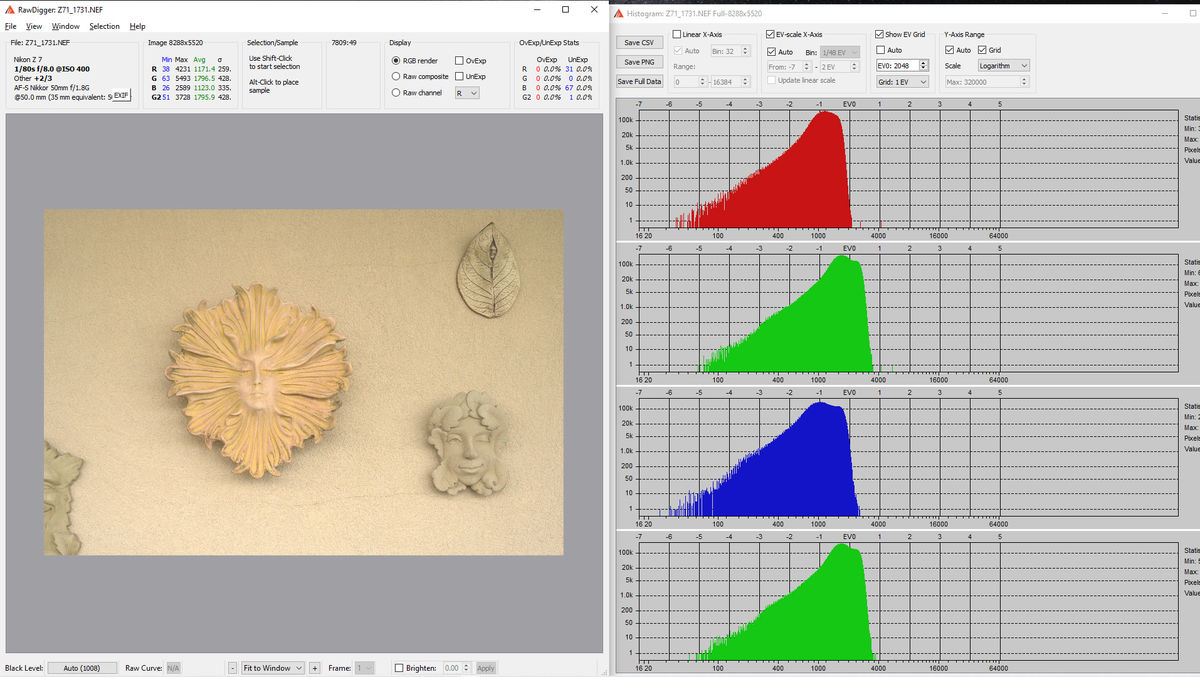
(Download)
A normal scene, no excessive DR but the highlights were protected.
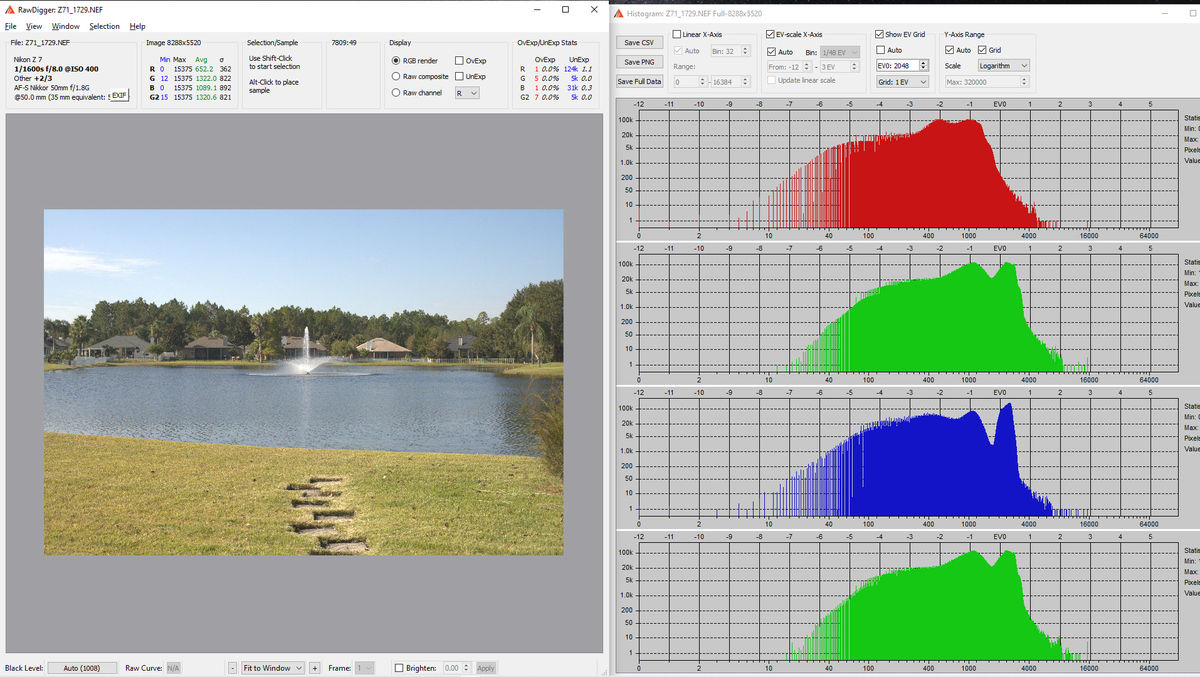
(Download)
A little more DR. The highlights on the PVC fence were flashing a little but the number of blown pixels is minimal.
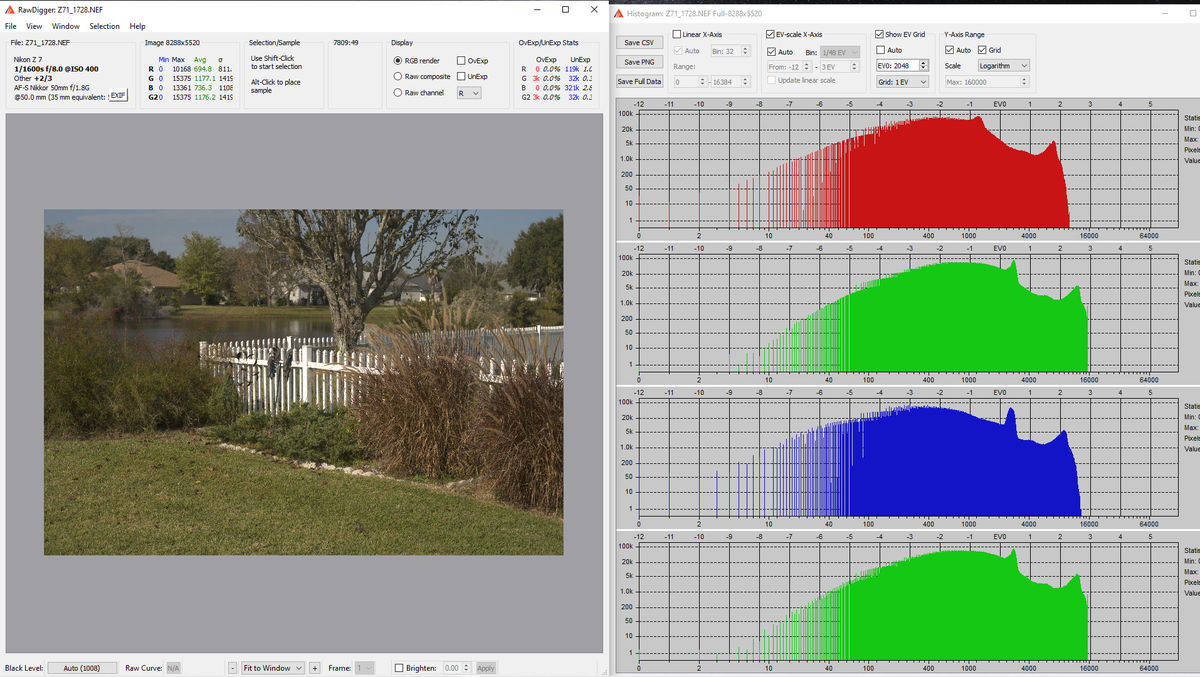
(Download)
A very wide DR scene. The highlights are protected and the shadows are darker.
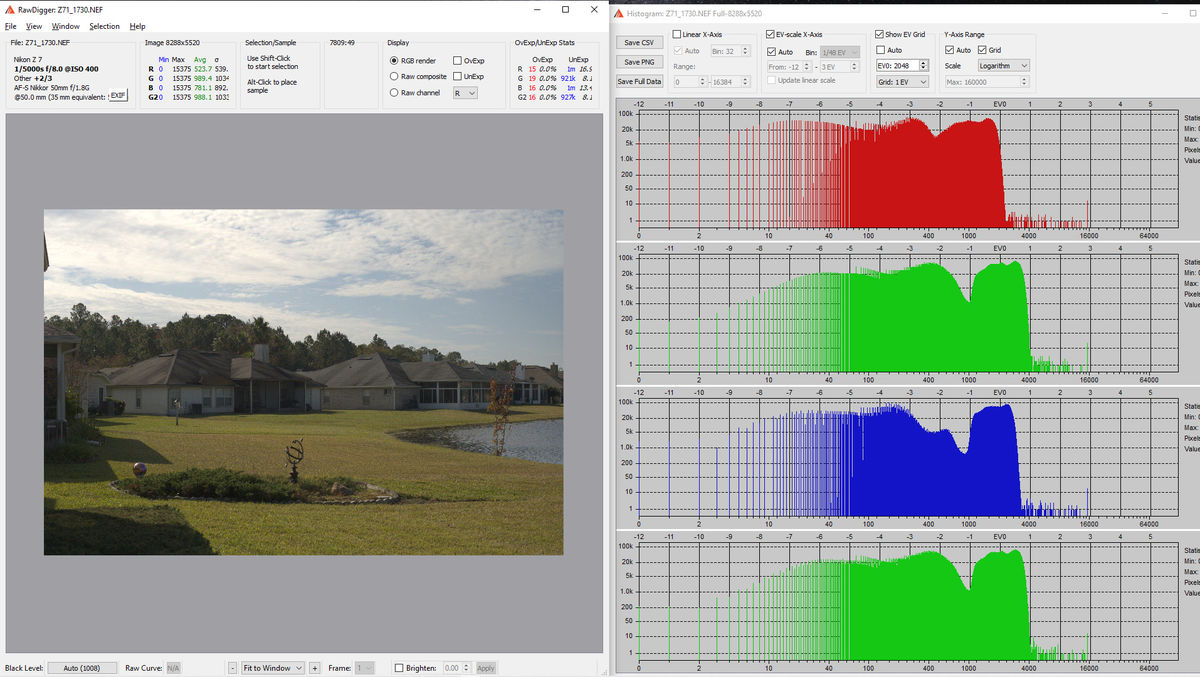
(Download)
Nov 19, 2021 13:17:13 #
Nov 19, 2021 13:45:09 #
R.G. wrote:
Will EC of +0.7 be safe for all of the Z series or just the Z7?
That’s the only one I tested but Nikons are pretty consistent.
It won’t take long to figure it out if you gave a different model. Just try it.
Nov 19, 2021 15:30:46 #
R.G. wrote:
Will EC of +0.7 be safe for all of the Z series or just the Z7?
Incidentally, +0.7 looks conservative for incandescent lighting which has more red and less blue.
Nov 19, 2021 15:54:15 #
a6k
Loc: Detroit & Sanibel
FYIO, highlight weighted metering is available in at least some Sony cameras, too. I have not tested it extensively but if it errs at all it does so on the safe side.
Example: https://helpguide.sony.net/ilc/1710/v1/en/contents/TP0001629671.html
Example: https://helpguide.sony.net/ilc/1710/v1/en/contents/TP0001629671.html
Nov 19, 2021 16:40:15 #
selmslie wrote:
The following post will contain some simple examples.
The simple examples posted only indicate one thing with respect to that camera highlight protection metering mode, and that is; 'for those specific scenes, with that specific framing, with EC +.7 set for each, those are the results you got with respect to exposure brightness.
Now take a scene such as one consisting of all tree vegetation and bright sky and vary the ratio between the two in the frame, e.g. 90% sky, 50% sky and 10% sky with the same EC set for all.
Nov 19, 2021 17:19:37 #
Grahame wrote:
The simple examples posted only indicate one thing with respect to that camera highlight protection metering mode, and that is; 'for those specific scenes, with that specific framing, with EC +.7 set for each, those are the results you got with respect to exposure brightness.
Now take a scene such as one consisting of all tree vegetation and bright sky and vary the ratio between the two in the frame, e.g. 90% sky, 50% sky and 10% sky with the same EC set for all.
Now take a scene such as one consisting of all tree vegetation and bright sky and vary the ratio between the two in the frame, e.g. 90% sky, 50% sky and 10% sky with the same EC set for all.
You don't have to go to that much trouble to find a scene with a wide DR.
Here is one with an extremely wide DR - a lot of the image is very dark. I wasn't sure how well it would handle the extreme so I dropped the EC to +0. As you can see, that wasn't necessary.
Highlight Weighted Metering looks for the brightest area in the image and reduces the exposure to ensure that it stays below the raw limit. At EC+0 it's about a full stop darker than the maximum.
Nov 19, 2021 17:22:59 #
a6k wrote:
FYIO, highlight weighted metering is available in at least some Sony cameras, too. I have not tested it extensively but if it errs at all it does so on the safe side.
Example: https://helpguide.sony.net/ilc/1710/v1/en/contents/TP0001629671.html
Example: https://helpguide.sony.net/ilc/1710/v1/en/contents/TP0001629671.html
I only have one Sony, A7 II. The Zebras and blinkies are conservative. They start between 1.0 and 1.3 stops below the raw limit.
A newer Sony with highlight weighted metering might be equally conservative although you can now adjust the gap between the zebras/blinkies and the raw limit.
Nov 19, 2021 17:29:16 #
selmslie wrote:
You don't have to go to that much trouble to find a scene with a wide DR.
It's nothing to do with looking for a scene with a wide dynamic range.
It's to do with how it responds to significantly varying 'areas' of brightness within a scene.
Nov 19, 2021 17:57:11 #
Grahame wrote:
It's nothing to do with looking for a scene with a wide dynamic range.
It's to do with how it responds to significantly varying 'areas' of brightness within a scene.
It's to do with how it responds to significantly varying 'areas' of brightness within a scene.
It’s all about accommodating a wide DR.
It doesn’t need to respond more than one of the varying areas - only the brightest one.
Nov 19, 2021 18:31:29 #
selmslie wrote:
It’s all about accommodating a wide DR.
The word "accommodating" is a very strange term to use when all it is doing is reducing exposure (brightness of the rendered image) to a point where hopefully the brightest areas are not blown.
If you were to undertake a meaningful test, as I have suggested, you would see the results would not portray what we generally consider ETTR. E.g, one of the images would be underexposed and one would be overexposed.
This is not to say the 'highlight metering mode' is not useful in certain circumstances but to simplify things as you have done suggesting it is a means to achieve ETTR with a fixed EC is simply pointless.
Nov 19, 2021 19:59:25 #
Grahame wrote:
The word "accommodating" is a very strange term to use when all it is doing is reducing exposure (brightness of the rendered image) to a point where hopefully the brightest areas are not blown.
If you were to undertake a meaningful test, as I have suggested, you would see the results would not portray what we generally consider ETTR. E.g, one of the images would be underexposed and one would be overexposed. ...
If you were to undertake a meaningful test, as I have suggested, you would see the results would not portray what we generally consider ETTR. E.g, one of the images would be underexposed and one would be overexposed. ...
If you look at the raw histograms you will see the reason that we want to expose to the right when the DR is wide.
The brightest stop of a 14-bit raw file can provide up to 8192 distinct raw values, far more than are needed to render a smooth tonal gradation for an only one stop range of brightness. The next stop down provides 4096 distinct values, still much more than necessary.
But as you move down one step at a time the number of distinct values drops by ½ for each stop. If the brightness drops far enough you will soon reach a stage where there are only a handful of possible values. This is eventually displayed in the histogram as a pattern that looks like a comb. Zero representing EV-12, 1 is EV-11, 2 is EV-10, 4 is EV-9, etc. It's not possible to recover a smooth tonality out of data that is that low and you are bound to see banding if you try to brighten them.
It is numerically impossible to derive a smooth and noise free tonality for a DR of 14 stops from a 14-bit raw file. The real DR limit for a 14-bit raw file is closer to 10 stops.
The goal of ETTR is to place the brightest raw value as high as possible without exceeding the raw limit (theoretically 16383 for a 14-bit raw file) so that we can record the widest possible DR before we start to see noise and the breakup of smooth tonality in the shadows. So "accommodating" is what we are doing when we record a wide DR in a raw file with a limited range.
So you only need one image that does not blow this highlights to prove that this works. You don't need one that is overexposed (with blown raw highlights) and another one that is underexposed to demonstrate the effectiveness of ETTR.
But what is often overlooked in these discussions is that, if the DR is not wide, you don't really need to bother with ETTR. There will be plenty of distinct values available in the raw file even if you over- or under-expose the image by a stop or so.
Nov 20, 2021 00:44:44 #
Ysarex
Loc: St. Louis
selmslie wrote:
The real DR limit for a 14-bit raw file is closer to 10 stops.
??? You seem to be implying that the ADC bit depth is limiting the sensor's DR. As in a sensor can't have a DR range in stops that's more than the ADC bit depth.
Nov 20, 2021 00:50:01 #
Ysarex wrote:
??? You seem to be implying that the ADC bit depth is limiting the sensor's DR. As in a sensor can't have a DR range in stops that's more than the ADC bit depth.
No. Please start your own thread.
If you want to reply, then register here. Registration is free and your account is created instantly, so you can post right away.


